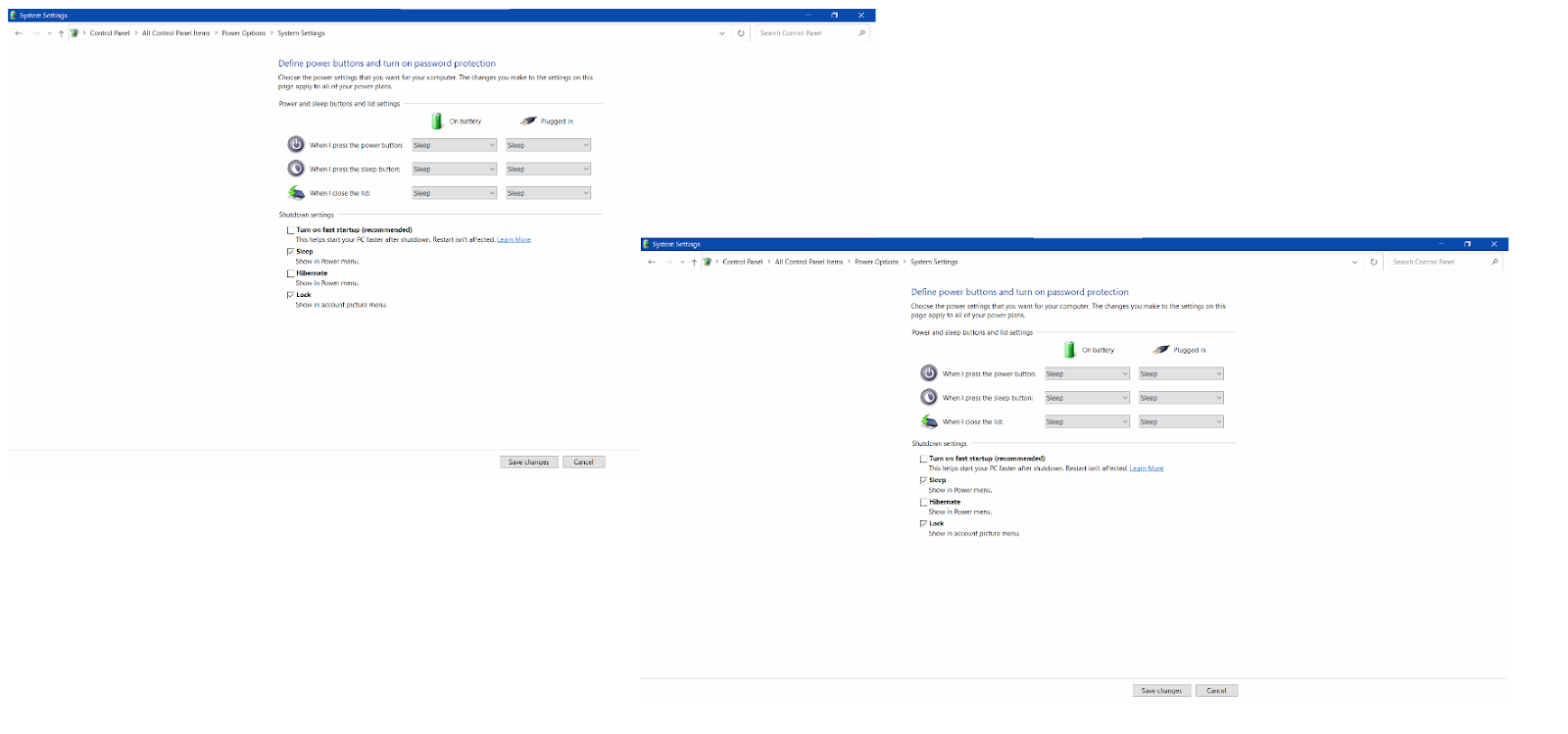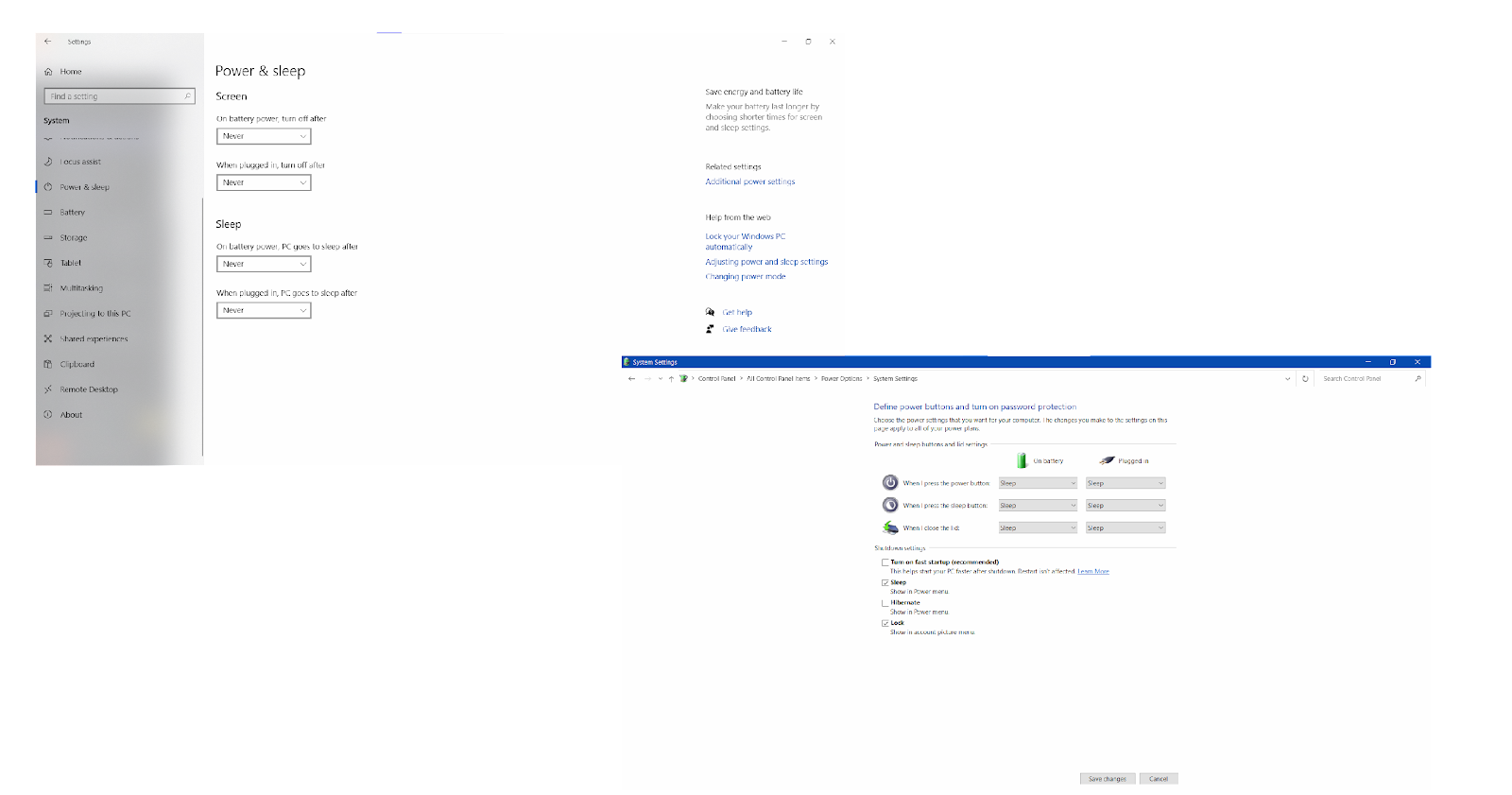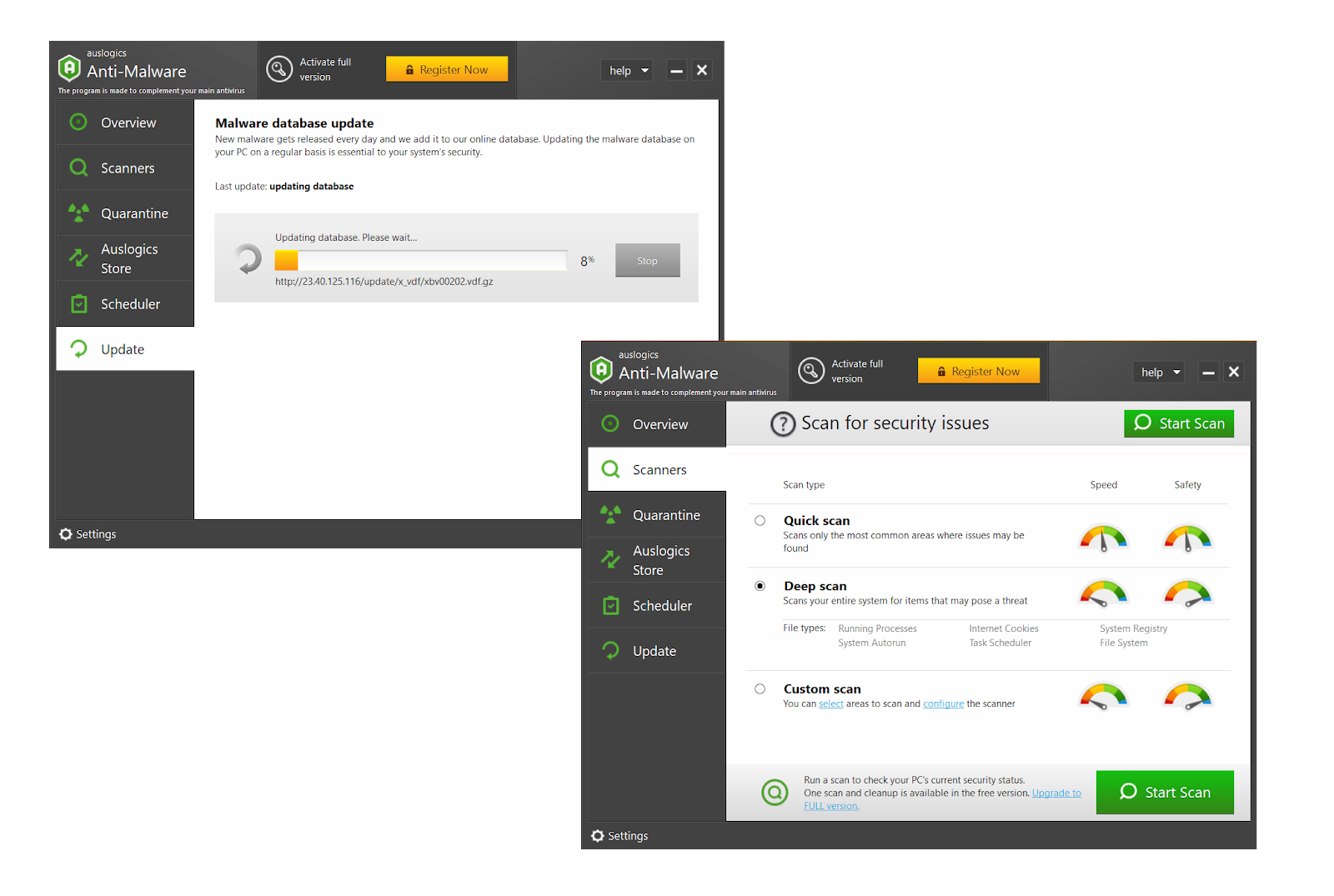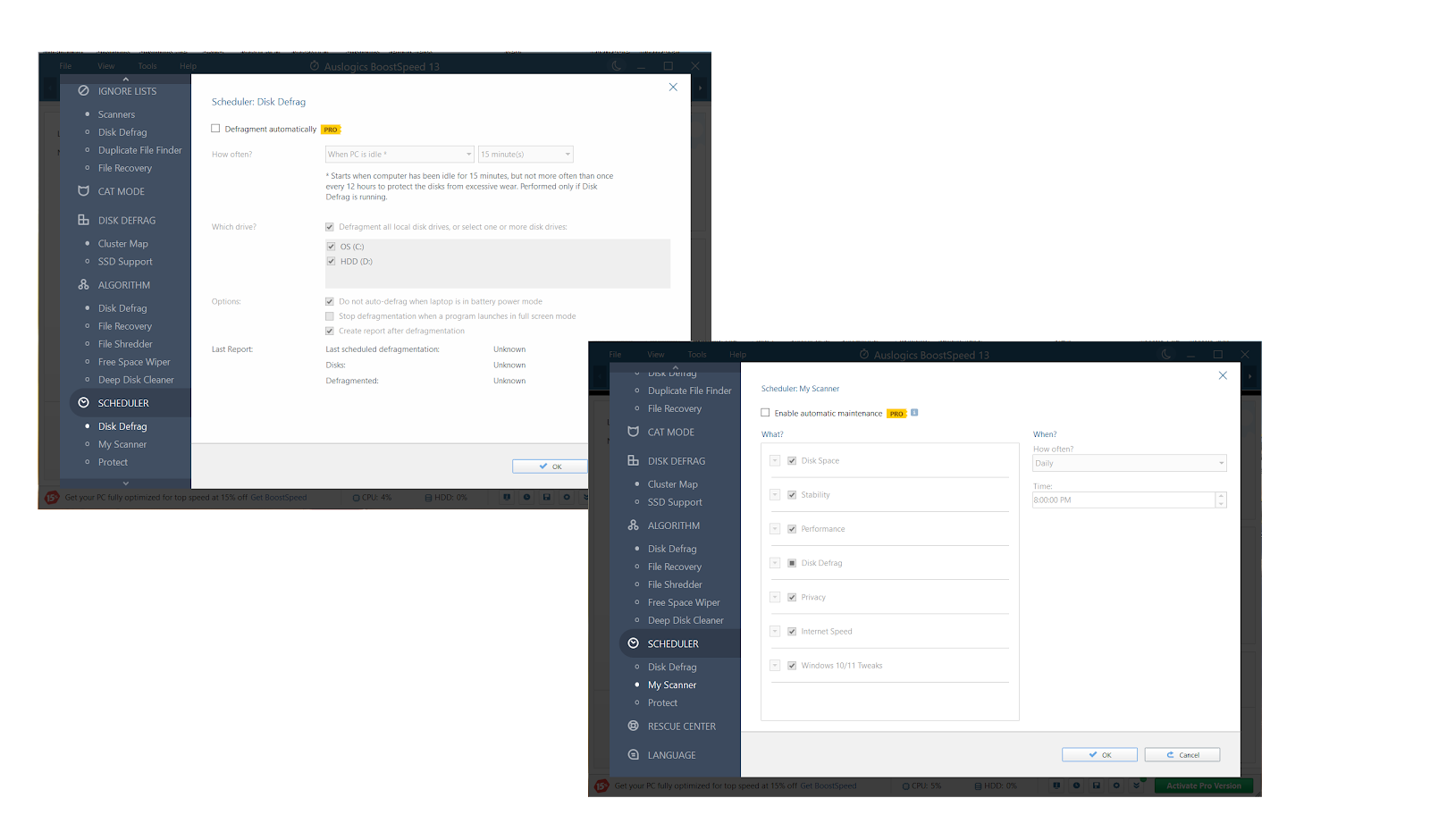- What Is Windows Fast Startup?
- How Does Windows Fast Startup Work?
- Why Disable Fast Startup in Windows 10/11?
- How to Turn Off Fast Startup in Windows 10 / How to Turn Off Fast Startup in Windows 11
- Method 1: Disabling Windows 10 Fast Startup / Windows 11 Fast Startup via the Control Panel
- Method 2: Disabling Fast Startup in Windows 10 / 11 using Power & Sleep Settings
- Method 3: Disabling Windows 10 Fast Startup / Windows 11 Fast Startup using the Command Prompt
- Method 4: Disabling Windows 10 Fast Startup / Windows 11 Fast Startup using the Registry Editor
- How to Fix Slow Boot Times on your Windows PC
- Conclusion
- FAQ
Windows Fast Startup is a handy feature that allows you to fast boot your OS. That said, while it saves valuable time, it can trigger issues on your Windows PC, preventing it from working as it should. In this article, you will find a collection of helpful tips on how to disable Fast Startup in Windows 10/11.
What Is Windows Fast Startup?
The Windows Fast Startup feature is designed to help your PC start up faster after a shutdown or restart. Technically, Fast Startup in Windows 10/11 is a hybrid of the Sleep and Hibernate modes, preserving your system’s state and allowing your device to start up quickly. It is particularly effective with an HDD compared to an SSD, as it minimizes the time needed to for the traditional hard disk drive to spin up.
How Does Windows Fast Startup Work?
When Fast Startup in Windows 10/11 is enabled, some system information is saved to a hibernation file when your computer gets shut down. This file contains the driver information and kernel session your PC needs to start up quickly. They will be used when you turn on your computer again, sparing the need to do a full system boot and saving a certain amount of time.
Why Disable Fast Startup in Windows 10/11?
There are several reasons why you may want to turn off Windows Fast Startup on your computer:
- Fast Startup in Windows 10/11 can be incompatible with some of your hardware or drivers, triggering persistent malfunctions and errors.
- The Windows Fast Startup feature can interfere with updates, preventing your system from getting the latest features, patches and enhancements and leaving it vulnerable.
- If you dual-boot Windows, Fast Startup can make it hard to switch between your operating systems. The boot menu may become inaccessible, or one of the boot loaders may fail.
- Windows Fast Startup can throw a spanner in the works if you encrypt data in Windows. The feature can come into conflict with your data encryption software or prevent you from accessing the encrypted drive.
- Fast Startup in Windows 10/11 may make it hard to access your BIOS settings during startup.
If any of these scenarios applies to you, keep reading to figure out how to disable Fast Startup in Windows 10 and how to disable Fast Startup in Windows 11.
How to Turn Off Fast Startup in Windows 10 / How to Turn Off Fast Startup in Windows 11
When it comes to disabling Windows Fast Startup, the process is similar in both Windows 10 and Windows 11 environments. Here are four methods of disabling the feature in question:
Method 1: Disabling Windows 10 Fast Startup / Windows 11 Fast Startup via the Control Panel
- Press the Windows key + S on your keyboard, type Control Panel, and select this option from the search results.
- Navigate to the top-right corner, locate the View by dropdown menu and change the view to Large icons or Small icons.
- Now that you can see all Control Panel options, click on Power Options.
- Then select the Choose what the power buttons do option, go to the Define power buttons and turn on password protection section and click on Change settings that are currently unavailable.
- Proceed to the Shutdown settings section and uncheck the Turn on fast startup (recommended) option to disable Fast Startup in Windows 10 or Windows 11 – whichever you’re running.
- At the bottom of the window, click on the Save changes button to confirm and apply the change.
![Disable Fast Startup via Control Panel]() Method 2: Disabling Fast Startup in Windows 10 / 11 using Power & Sleep Settings
Method 2: Disabling Fast Startup in Windows 10 / 11 using Power & Sleep Settings
- Run the Settings app by pressing the Windows key and I on your keyboard.
- Locate the System option and select it.
- Navigate the left sidebar and choose Power & sleep.
- On the right side of the window, click the Additional power settings link under the Related settings section. You will be taken to the Power Options section, which is located in the Control Panel.
- As in the previous method, click Choose what the power buttons do and go to Define power buttons and turn on password protection.
- Click on the option Change settings that are currently unavailable.
- Go to the Shutdown settings section, locate the Turn on fast startup (recommended) option and uncheck it to disable Fast Startup in Windows 11 or Windows 10.
- Click on the Save changes button to save the change in your startup configuration.
Method 3: Disabling Windows 10 Fast Startup / Windows 11 Fast Startup using the Command Prompt
- Open the Command Prompt with administrative privileges: type cmd into your Search bar and select the Run as administrator option under Command Prompt.
- Once the Command Prompt is up and running, type in powercfg /hibernate off and press Enter. This command disables hibernation along with Fast Startup in Windows 10/11.
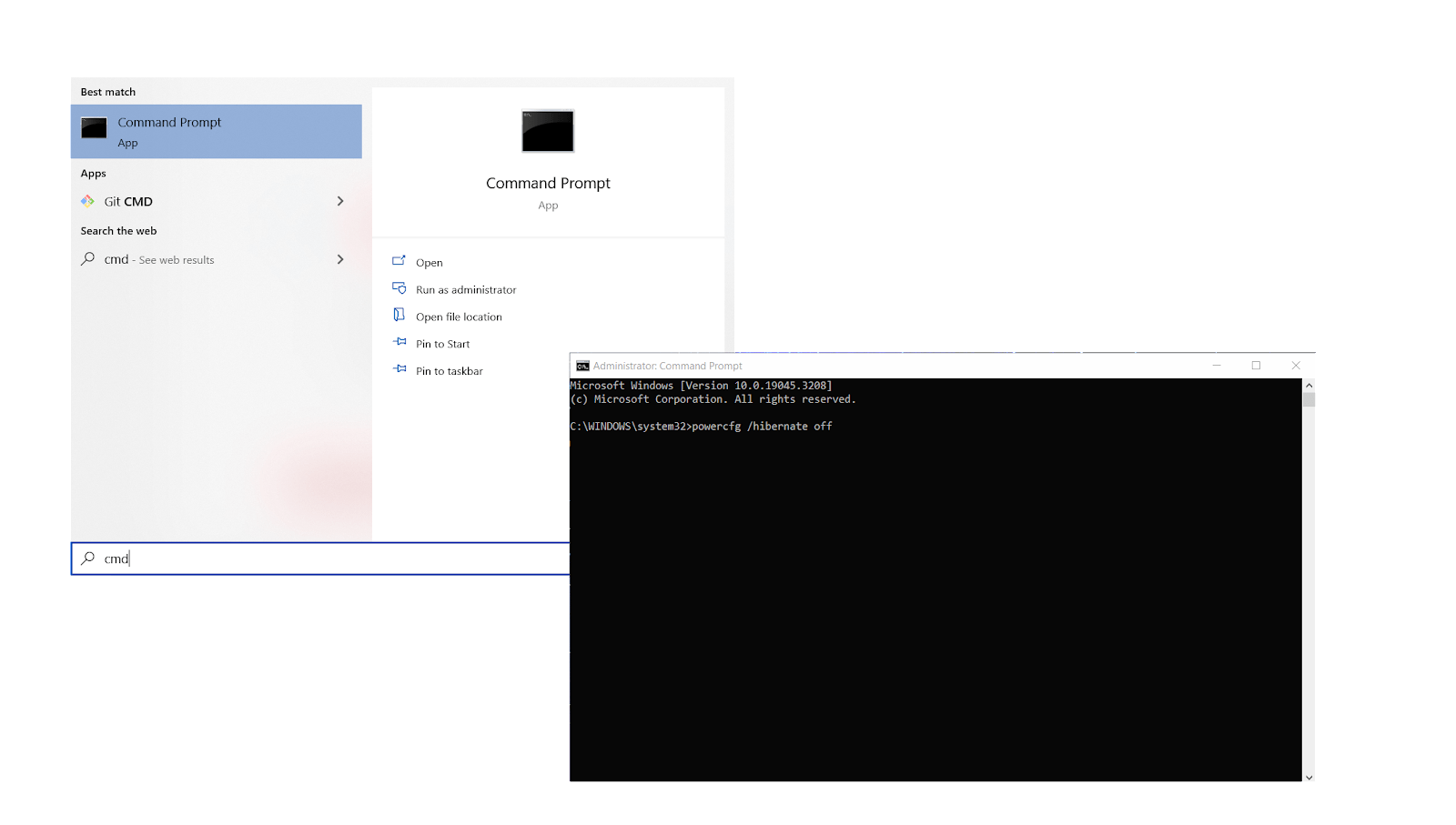
Method 4: Disabling Windows 10 Fast Startup / Windows 11 Fast Startup using the Registry Editor
- Fire up Run by pressing the Windows key + R combination on the keyboard.
- Type regedit into Run and hit the Enter button to open the Registry Editor.
- On the left pane, navigate a path such as HKEY_LOCAL_MACHINE\SYSTEM\CurrentControlSet\Control\Session Manager\Power.
- On the right-pane, double-click on HiberbootEnabled.
- Set the value data to 0 and click OK to save the changes and disable Fast Startup in Windows 10/11.
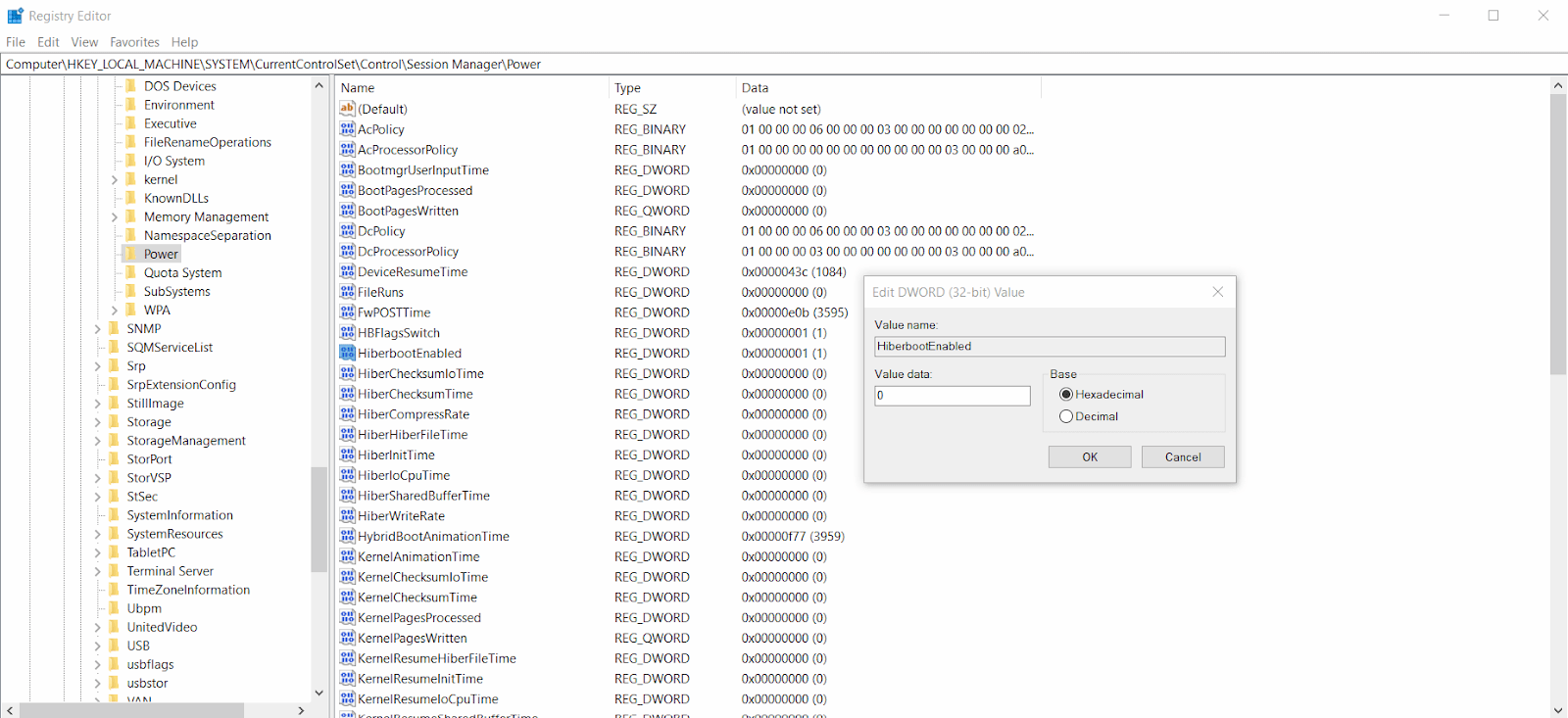
After using any of the methods above to disable Windows 10 Fast Startup / Windows 11 Fast Startup, your PC will shut down and perform the full, unabridged version of the startup procedure.
How to Fix Slow Boot Times on your Windows PC
Windows is the biggest player in the desktop OS market, yet its huge user base often encounters system slowdown issues, including slow boot times. We have a detailed guide on how to make your PC boot faster and recommend you to check it. Below you will also find a few tips on how to speed up Windows in a case where Windows Fast Startup is not a workable solution:
Check Your PC for Malware
The annual number of malware attacks is incredibly high, so your slow startups may be a sign your system is infected – especially if you are doing business on your computer. To stay safe, you need to know how to locate and eliminate malware entry points and remove viruses and other malware from your computer. A simple solution is to use a powerful protection tool like Auslogics Anti-Malware:
- Download and install the Auslogics Anti-Malware app on your Windows PC.
- Wait while the tool’s anti-malware database is being updated.
- On the left pane, navigate to the Scanners tab and open it.
- We recommend you to run a deep scan to check every nook and cranny of your system.
- Once the scan is over, quarantine or eliminated whatever has been detected by the tool.
Hopefully, after that, your PC will boot faster even with the Windows Fast Startup feature disabled.
Remove Junk From Your PC
Over time, software leftovers, obsolete files and other types of junk tend to accumulate on your computer. To free up storage and make your PC run faster, you need to regularly declutter it. There are proven ways to clean Windows that are likely to speed up your computer’s startups. Alternatively, you can automate the process with a dedicated PC optimizer called Auslogics BoostSpeed:
- Download the Auslogics BoostSpeed tool on your computer and run it.
- From the My Dashboard screen, click on File and select Automatic Maintenance.
- On the left pane, under Scheduler, click on My scanner.
- Under Scheduler: My Scanner, click Enable automatic maintenance.
- Configure the automatic maintenance settings in this window and click the OK button to apply them.
With regular automatic maintenance enabled, your system should start up faster.
Perform a Physical Cleanup
Your device may be clogged with dust and debris, which can trigger slow boot times in Windows. In such a case, neither the Windows Fast Startup feature nor a software cleaner will help you tackle this problem. You need to perform a physical cleanup to enjoy a dust-free PC that starts up quickly and runs as it is supposed to.
Conclusion
Windows Fast Startup lets your system start up faster, yet in some cases, you might be better off disabling this feature due to the compatibility, update, and access issues it can trigger. You can disable Fast Startup in Windows 10 and Windows 11 using the Control Panel, Settings, the Registry Editor, or the Command Prompt. And for your PC to boot faster, remove software junk, dust, and malware from it.
Also Read:
[FIXED] How to Fix “Windows 10 Won’t Boot” Problem Easily
[FIXED] How to fix the Inaccessible Boot Device Error in Windows 10?
[FIXED] How to fix “Reboot and Select Proper Boot Device” Error for Windows 10, 7, XP
FAQ
Where Is Fast Startup in Windows 10?
If you want to access the Windows 10 Fast Startup feature, open the Control Panel, click Power Options, select Choose what the power buttons do, and click Change settings that are currently unavailable. You will find the Turn on fast startup (recommended) option under Shutdown settings.
Where is Fast Startup in Windows 11?
Follow this path to access the Windows 11 Fast Startup feature: Settings -> System -> Power & sleep -> Additional power settings -> Choose what the power buttons do -> Change settings that are currently unavailable -> Shutdown settings -> Turn on fast startup (recommended). Unchecking this option is how to turn off Fast Startup in Windows 11.
How to Enable Fast Startup in Windows 10?
To enable Windows 10 Fast Startup, launch the Control Panel, click Power Options, then click Choose what the power buttons do, and select Change settings that are currently unavailable. Navigate to the Turn on fast startup (recommended) option under Shutdown settings and check it.
What Does Windows 10 Fast Startup do?
Windows 10 Fast Startup, as well as Windows 11 Fast Startup, is a built-in feature designed to help you fast boot your operating system. By enabling it, you can decrease your computer’s startup time. This is particularly noticeable if you run the traditional hard disk drive. It needs less time to spin up and become fully functional since your OS skips certain initialization steps when booting up.




